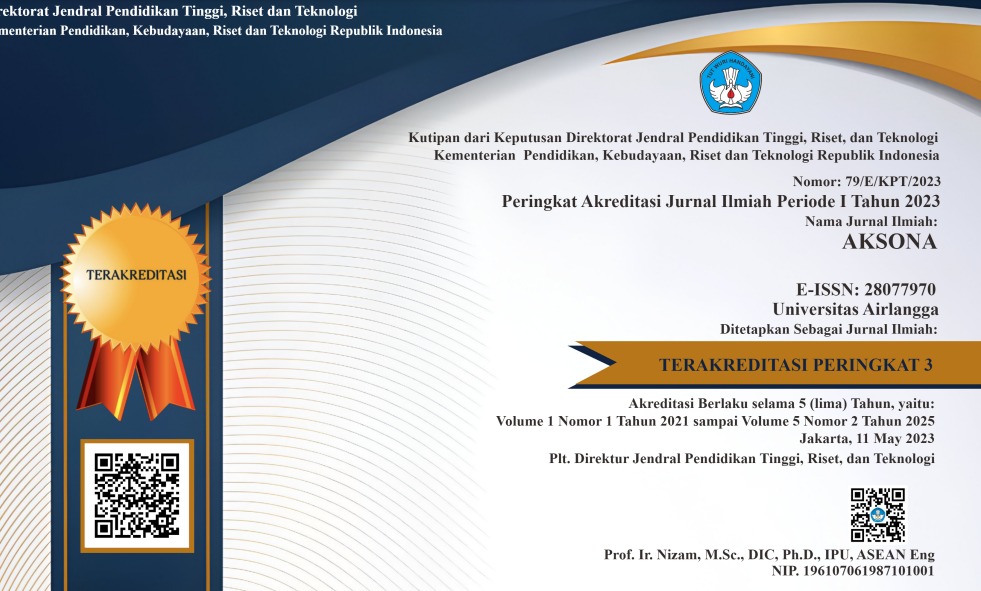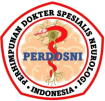Cerebellar Purkinje Cells and GABA Neurotransmission in the Diabetic Rodent Models: A Systematic Review
Downloads
Highlight:
- Reduced cerebellar Purkinje cell numbers and altered dendritic trees due to cell deaths were reported in hyperglycemia.
- In hyperglycemia, altered GABAergic neurotransmissions are due to lower GABA synthesis and its receptors expression levels in cerebellum.
-
Impaired motor and cognitive functions were observed related to cerebellar Purkinje cell damage in a diabetic rat model.
ABSTRACT
Introduction: Hyperglycemia-induced neurotoxicity has been linked to the cerebellum, specifically the impairment of Purkinje cells; its relation to GABA neurotransmission has yet to be cleared. Objective: We conducted an updated review on the mechanism of hyperglycemia-induced impairment of cerebellar Purkinje cells in a rodent diabetic model. Methods: A modified ScR-PRISMA flow diagram was applied as the screening tool. All English-language research articles published between 2014 and 2024 that containing the purposed topics and were indexed in PubMed and Medline were included. These articles were then critically appraised using the JBI checklist to minimize potential bias. The final inclusion of 8 articles was included for analysis and discussion, together with additional retrieved articles. Results: Hyperglycemic-induced subjects demonstrated a marked reduction in Purkinje and granular cell populations, accompanied by several morphological impairments. Alterations were observed in GABAergic inhibitory neurotransmission, including receptors and GABA synthesis, compared to controls. These findings are consistent with observed deficits in motor coordination and cerebellar function. Conclusion: Hyperglycemia produces adverse effects on the function and survival of Purkinje cells in the cerebellum. Impaired GABAergic neurotransmission might result as parts of oxidative stress and inflammation induced by hyperglycemia in the cerebellar cells. Taken altogether, these results in motor impairment and cognitive dysfunction.
Gupta M, Pandey S, Rumman M, Singh B, Mahdi AA. Molecular mechanisms underlying hyperglycemia associated cognitive decline. IBRO Neurosci Rep. 2023; 14:57–63; doi: 10.1016/j.ibneur.2022.12. 006
Kalanjati VP, Dewi AK, Santoso MWA. Quantitative study on human cerebellar cortex from anatomy cadaver preparations. Int J Morphol. 2017; 35(1):167–71; doi: 10.4067/S0717-95022017 000100027
Perovic M, Pavlovic D, Palmer Z, Udo MSB, Citadin CT, Rodgers KM, et al. Modulation of GABAergic system as a therapeutic option in stroke. Exp Neurol. 2025; 384:115050; doi: 10.1016/j.expneurol. 2024.11 5050
Tang X, Jaenisch R, Sur M. The role of GABAergic signalling in neurodevelopmental disorders. Nat Rev Neurosci. 2021; 22(5):290–307; doi: 10.1038/s41583-021-00443-x
Joanna Briggs Institute. Critical Appraisal Tools. 2023. [Web page]
Prisma Group. PRISMA Flow Diagram. 2020. [Web page]
National Library of Medicine. Accelerating biomedical discovery and data-powered health. 2024. [Web page]
Abdel Fattah S, Waly H, El-enein AA, Kamel A, Labib H. Mesenchymal stem cells versus curcumin in enhancing the alterations in the cerebellar cortex of streptozocin-induced diabetic albino rats. The role of GFAP, PLC and α-synuclein. J Chem Neuroanat. 2020; 109:101842; doi: 10.1016/j.jchemneu. 2020.101842
Bak DH, Zhang E, Yi MH, Kim DY, Lim K, Kim JJ, et al. High ω3-polyunsaturated fatty acids in fat-1 mice prevent streptozotocin-induced Purkinje cell degeneration through BDNF-mediated autophagy. Sci Rep. 2015; 5(1):15465; doi: 10.1038/srep15465
Forero-Vivas ME, Hernández-Cruz A. Increased firing frequency of spontaneous action potentials in cerebellar Purkinje neurons of db/db mice results from altered auto-rhythmicity and diminished GABAergic tonic inhibition. Gen Physiol Biophys. 2014; 33(1):29–41; doi: 10.4149/gpb_2013 056
Yang S, Xia C, Li S, Du L, Zhang L, Hu Y. Mitochondrial dysfunction driven by the LRRK2-mediated pathway is associated with loss of Purkinje cells and motor coordination deficits in diabetic rat model. Cell Death Dis. 2014; 5(5):e1217–e1217; doi: 10.1038/cddis.2014.184
Santoso P, Simatupang A, Fajria A, Rahayu R, Jannatan R. Andaliman (Zanthoxylum acanthopodium DC.) fruit ethanolic extract exerts attenuative effect on hyperglycemia, sensory and motoric function’s disorders in alloxan-induced diabetic mice. J Adv Vet Anim Res. 2023; 10(4):608-19; doi: 10.5455/javar. 2023.j716
Kara A, Unal D, Simsek N, Yucel A, Yucel N, Selli J. Ultra-structural changes and apoptotic activity in cerebellum of post-menopausal-diabetic rats: A histochemical and ultra-structural study. Gynecol Endocrinol. 2014; 30(3):226–31; doi: 10.3109 /09513590.2013.864270
Seke Etet PF, Farahna M, Satti GMH, Bushara YM, El-Tahir A, Hamza MA, et al. Garcinia kola seeds may prevent cognitive and motor dysfunctions in a type 1 diabetes mellitus rat model partly by mitigating neuroinflammation. J Complement Integr Med. 2017; 14(3); doi: 10.1515/jcim-2016-0167
Solmaz V, Köse Özlece H, Eroglu HA, Aktuğ H, Erbaş O, Taşkıran D. Accumulation of α -Synuclein in cerebellar purkinje cells of diabetic rats and its potential relationship with inflammation and oxidative stress markers. Neurol Res Int. 2017; 2017(1):1–6; doi: 10.1155/2017/ 5952149
Lee H, Kim MJ, Lee IK, Hong CW, Jeon JH. Impact of hyperglycemia on immune cell function: A comprehensive review. Diabetol Int. 2024; 15(4):745–60; doi: 10.1007/s13340-024-00741-6
González P, Lozano P, Ros G, Solano F. Hyperglycemia and oxidative stress: an integral, updated and critical overview of their metabolic interconnections. Int J Mol Sci. 2023; 24(11):9352; doi: 10.3390/ijms24119352
Hwang ES, Song SB. Impaired autophagic flux in glucose-deprived cells: An outcome of lysosomal acidification failure exacerbated by mitophagy dysfunction. Mol Cells. 2023; 46(11):655–63. doi: 10.14348/molcells.2023.0121
Arcambal A, Taïlé J, Rondeau P, Viranaïcken W, Meilhac O, Gonthier M-P. Hyperglycemia modulates redox, inflammatory and vasoactive markers through specific signaling pathways in cerebral endothelial cells: Insights on insulin protective action. Free Radic Biol Med. 2019; 130:59–70. doi: 10.1016/j.freerad biomed.2018.10.430
Pétriz A, Reyes-Haro D, González-González MA, Miledi R, Martínez-Torres A. GABAρ subunits confer a bicuculline-insensitive component to GFAP+ cells of cerebellum. Proc Natl Acad Sci. 2014; 111(49):17522–7; doi: 10.1073/pnas.1419 632111
Cook AA, Fields E, Watt AJ. Losing the beat: Contribution of purkinje cell firing dysfunction to disease, and its reversal. Neuroscience 2021; 462:247–61; doi: 10.1016/j.neuroscience. 2020.06.008
Nishiyama H, Nishiyama N, Zemelman BV. Loss of purkinje cells in the developing cerebellum strengthens the cerebellothalamic synapses. 2023; doi: 10.1101/2023.11.01.564 864
Calvo‐Flores Guzmán B, Vinnakota C, Govindpani K, Waldvogel HJ, Faull RLM, Kwakowsky A. The GABAergic system as a therapeutic target for Alzheimer’s disease. J Neurochem. 2018; 146(6):649–69; doi: 10.1111/jnc.14345
Bodaghi A, Fattahi N, Ramazani A. Biomarkers: Promising and valuable tools towards diagnosis, prognosis and treatment of Covid-19 and other diseases. Heliyon. 2023; 9(2):e13323; doi: 10.1016/j.heliyon.2023.e13323
Chaudhary R, Nawaz A, Khattak Z, Butt MA, Fouillaud M, Dufossé L, et al. Microbial bio-control agents: A comprehensive analysis on sustainable pest management in agriculture. J Agric Food Res. 2024; 18:101421; doi: 10.1016/j.jafr.2024.101421
Copyright (c) 2025 Viskasari P Kalanjati, Rayhan B Mahdi, Dwi Martha Nur Aditya

This work is licensed under a Creative Commons Attribution-ShareAlike 4.0 International License.





















